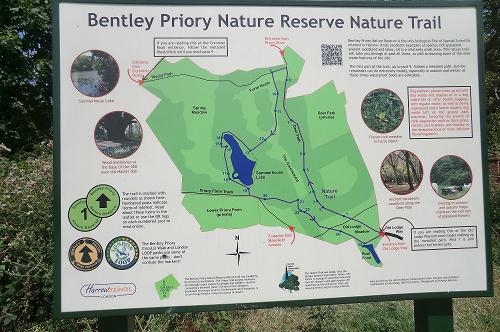The name Bentley is believed to derive from the Anglo-Saxon word Beonet, which means a place covered in coarse grass, and Leah, a piece of cleared ground on the uplands. These words imply open space and traditional grassland, which remain a feature of the reserve today.
This was originally the park and pleasure grounds of the estate of Bentley Priory which originated in the early 13th century as an Augustinian house attached to the Priory of St Gregory, Canterbury. In 1926 the estate was broken up, with 240 acres sold to a building syndicate, who divided it into lots, enabling Middlesex County Council to purchase 90 acres of land as part of the Green Belt for a public park. The Air Ministry purchased the mansion and 40 acres of land, including the formal gardens The land purchased by the Middlesex County Council was transferred to the GLC, and came into the ownership of The London Borough of Harrow in 1968. The grounds are now maintained as a nature reserve by the Harrow Nature Conservation Forum, a sub-committee of the Harrow Heritage Trust
The Bentley Priory Nature Reserve comprises of nearly 70 hectares of ancient woodland, scrub and wetland, which includes traditional grassland, an unusual combination of habitats in Greater London. The dominant grasses are common bent, red fescue and Yorkshire Fog, which have never been treated with fertilisers, and hence are rich in wild flowers. Uncommon wild flowers include greater burnet saxifrage, great burnet spotted orchid, betony, devil's-bit scabious and harebell, plus sanicle in the woods and it has been designated a site of special scientific interest (S.S.S.I.) by English Nature
Many interesting and relatively uncommon birds can be seen or heard including buzzard, spotted flycatcher and bullfinch. In summer warblers such as whitethroat, garden warbler, blackcap, chiffchaff and willow warbler can be heard. These breed in the scrubland in Spring Meadow and are rarely seen in the mature woodland. In winter, large numbers of redpoll, siskin, redwing, fieldfare and goldcrest arrive from mainland Europe and Scandinavia
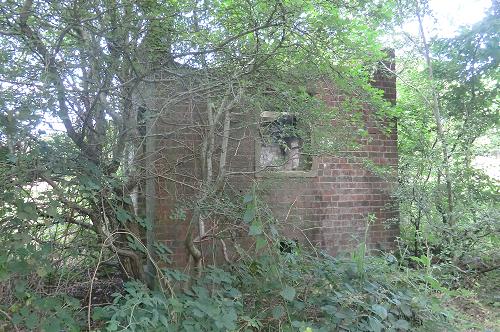
Bentley Priory has a number of ancient woods, Heriot’s Wood is known to have been a wood since 1600 and probably ever since the last glaciers retreated 11,500 years ago. Here grows Hornbeam, a species characteristic of ancient woodland and also contains vestiges of C19th ornamental planting that includes Midland and common hawthorn, birch, cedars, yew, and odd patches of laurel, and rhododendron .
To the west of Summerhouse Lake stands the “Master”, a mighty oak with a trunk 9m in circumference estimated to be over 400 years old and pollarded (pruned in which the upper branches are removed, promoting a dense head of foliage and branches) some 200 years ago. reputedly the oldest oak tree in Middlesex
To the east of Heriot's Wood and alongside the public footpath is a private Deer Park with a herd of approximately 20 Fallow Deer.
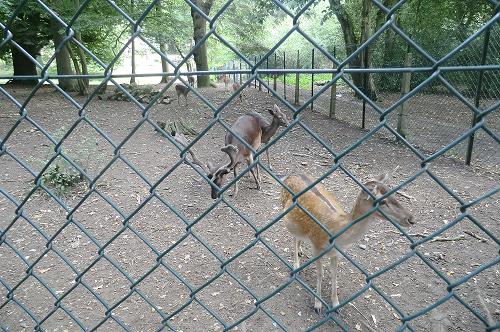
Edgware Brook, a small stream which runs through the grounds, was dammed to form Summerhouse Lake. The lake was named after the lakeside gazebo of Queen Adelaide, the widow of King William IV, who spent the last years of her life there in the 1840s.
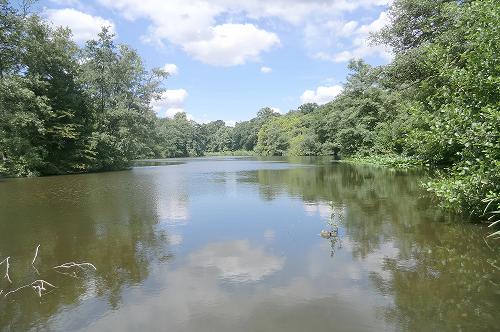
The importance of the lake was recognised in 1974 when it was designated a nature reserve, a management committee was set up in 1975. The site of the old summerhouse from which the lake takes its name was destroyed in a fire, but it was here that Sir Walter Scott reputedly wrote his novel 'Marmion' in 1808.
In the south-east corner of the park is Boot Pond, so-called because of its shape, which in the early C19th was actually part of Stanmore Park rather than Bentley Priory.
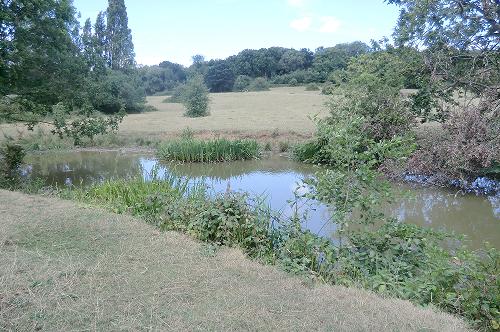
The pond is located near the Old Lodge Way entrance
The restoration of Furze Heath
The Bentley priory nature reserve management committee is leading a heritage lottery funded project to restore species rich grassland on Furze Heath and in the Greensward. As the grass has never been treated with fertiliser it is much richer in wild flowers and the insects and birds that depend on them, than pasture that has been treated. Between 1930 and 1984 England and Wales lost 97% of our unimproved grassland due to agricultural intensification. Bentley Priory nature reserve is therefore precious and is the main reason the site was designated a site of special scientific interest. When Sir John Kelk bought the Priory in 1863 most of the areas between the lake and ancient woodlands of Heriots Wood was open grassland. The land remained open until the Second World War. However since 1950 Gorse and bramble have invaded the open ground and trees have grown up, and over 70 years the grassland has become young woodland. In 2012 the management committee was awarded lottery funds to reverse this decline in grassland area. The open area will by no means be returned to its Victorian extent but enough will be done to restore the feel of Furze Heath and Greensward as one continuous open space
In the summer month’s dairy cows freely graze the meadows and the public park, so dogs should be kept on a lead and under control around them.
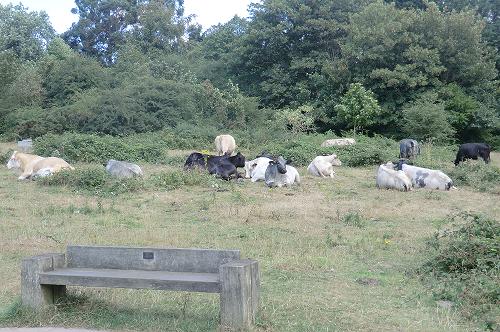
To the north of the site is an old military pillbox it is a Type 24 design and was erected as part of the perimeter defenses of RAF Bentley Priory, probably around 1940-41. Its field of fire, directed towards the south-east. It is an irregular hexagon in plan, orientated with the long rear entrance elevation to the north-west. It is constructed of concrete with internal and external shuttering of red brick laid in stretcher bond and set on a concrete base. It is of the thicker-walled variety with five pre-formed embrasures for employing light machine guns. The rear wall has the entrance flanked by a pair of square rifle loopholes. The embrasures and loopholes have modern metal shutters. Internally it retains its brick, Y-plan, anti-ricochet wall. It has been proposed that the entrance be closed off with blocks which will act as thermal insulation and the building maintained as a potential bat roost.
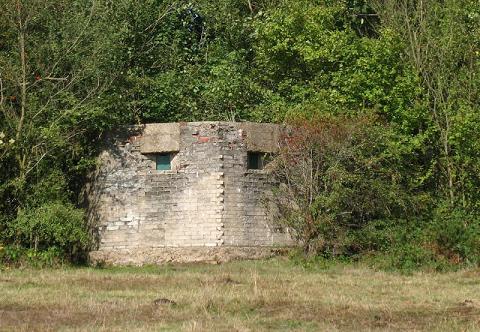
a type 24 Pill Box Gun Emplacement
Getting Here.
The Bentley Priory nature reserve is situated to the North West of Stanmore town. It is very easily accessible by public transport getting the Jubilee line to Stanmore Station and from there you can take the H12. The 340, 258 142 and all will take you within 5 minutes of the place. There is access from Common Road, Priory Drive, Aylmer Drive, Embry Way, Old Lodge Way, Bentley Way and Masefield Avenue. There is no designated car parking as all entrances are in residential streets, but a car park in Warren Lane at Stanmore Common is within five minutes walk.
